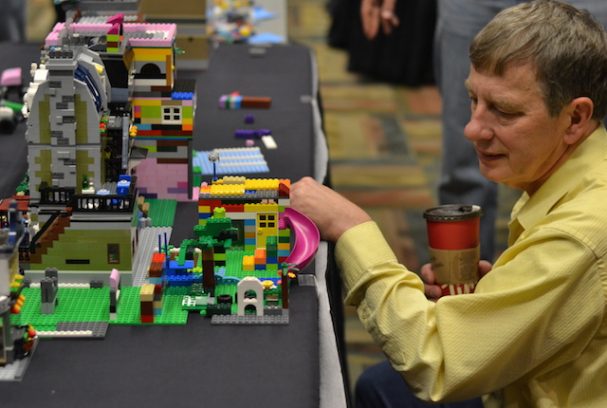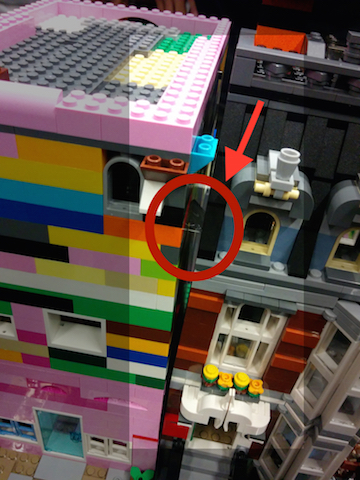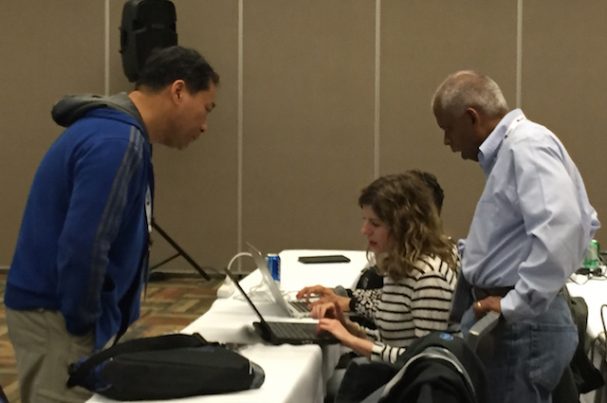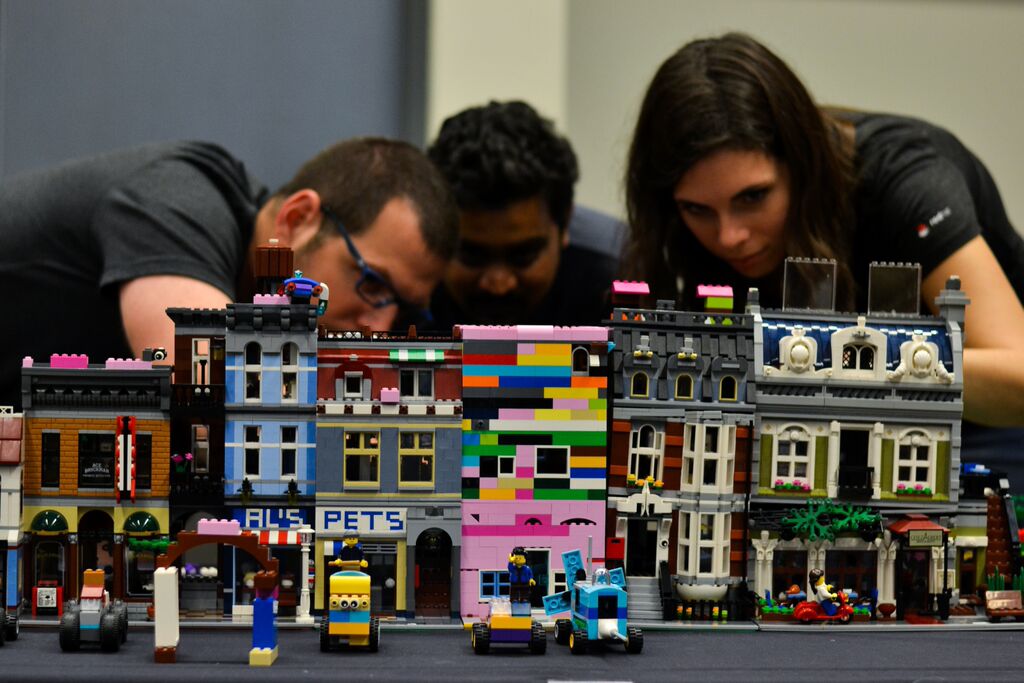If you want to build a gas station next to a children’s playground, fireworks are pretty much guaranteed.
That not-in-my-neighborhood face-off was one of the issues hashed out in a recent OpenStack Upstream Training session where about 50 participants split into teams building Lego sets.
The two-day training ahead of the Summit Vancouver schooled newcomers in the wide array of tools used to contribute code to OpenStack, making sure they know their Gerrit from their Jenkins as they join a community of over 3,300 developers from 250 different companies worldwide. On the first day, people pick a real bug to work on, set up a development environment, get online accounts for all the tools, sign the contributor license agreements and learn about the workflow release cycle.

Vancouver’s Upstream Training class poses with the finished Lego block. Photo: Shari Mahrdt, OpenStack Foundation.
Day two focuses on soft skills and planning contributions — that’s where the Legos come in. The brainchild of free software developer Loïc Dachary, it’s a role-playing game that mimics what happens in open-source communities. It works like this: people in each room are split into three groups. One group has the role of upstream contributors in the existing community, one group is a company with a CEO/hierarchical set-up and the third group are random contributors with no organizational constraints.
The objective? The three groups in each room work separately to expand their own little city block that must interlock perfectly with the add-ons of the other groups. Echoing the fast pace of open-source development, teams push through a design phase of five minutes, then hit the bricks to execute for 15 minutes before winding up with a five-minute review session. Then they start all over again, until the clock runs out in 90 minutes.
In Vancouver, the initial design for one the “company” group was to build a gas station. The upstream group, however, planned to build a park with a playground next to it. Imagining children frolicking on monkey bars beneath a canopy of gas fumes, the groups realized something had to give. This time, the company compromised by refining its business model — and stacking up an electric vehicle charging station instead.

Playful compromise: the pink playground slide next to the electric vehicle charging station. Photo: Shari Mahrdt, OpenStack Foundation.
“People rarely have experience with the kind of distributed leadership that drives the open source world,” says Stefano Maffulli, developer advocate at the OpenStack Foundation. “School doesn’t teach you how to collaborate with others across companies and most jobs don’t either. It freaks everyone out — managers and engineers alike — when they have to mediate internal deadlines, bonuses and work assignments outside corporate boundaries. With this training, we teach engineers what this is all about. We want everyone to win by collaborating with OpenStack.”

Doh! Here’s what happens when groups don’t coordinate: the new Lego block is on shaky foundations. Photo: Stefano Maffulli
Fortunately, the newbies don’t go it alone. Facilitators (volunteers recruited from the most experienced OpenStack contributors) help highlight communication challenges, conflicts of interest and how to address them. In Vancouver, 10 mentors, many of them multilingual, helped connect the dots.
Invariably, people are surprised by the fast-paced amount of chaos and the surprisingly orderly results, says Maffulli, who has run the training in Atlanta and Paris. (Fortunately, the Legos sets don’t travel that much, he adds. This time they came from Lego-sharing outfit Papa’s Brick Room.)
“The Lego building was hilarious and fun and people really got a lot out of it,” says Lana Brindley, who works at Rackspace and is OpenStack’s new documentation project team lead (PTL.) It was her first time as an upstream training facilitator. “They had lots of feedback after the build session, it was like: ‘Now I get this!’ They can see how important it is that you actually talk to people you wouldn’t normally talk to when working across projects.”
Fun and games aside, Brindley says the number of participants interested in documentation was encouraging. “People use documentation as a launch pad into other parts of the OpenStack community, and having new people means that when they get good and move into other things, there’s a pipeline.”

Rossella Sblendido of SUSE shows the ropes to two OpenStack newcomers. Photo: Nicole Martinelli
Maffulli’s debrief on this session of Upstream Training hints at changes to come. Those include easier bugs to fix and a more streamlined way to pair new contributors with mentors. Oh, and more rented Legos.
Want to help build the OpenStack community? Consider becoming a mentor.
- OpenStack Homebrew Club: Meet the sausage cloud - July 31, 2019
- Building a virtuous circle with open infrastructure: Inclusive, global, adaptable - July 30, 2019
- Using Istio’s Mixer for network request caching: What’s next - July 22, 2019

)







